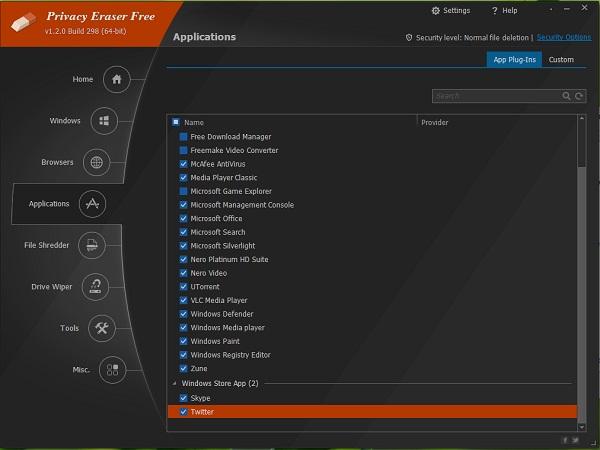

- #Permanent eraser utility for linux update
- #Permanent eraser utility for linux software
- #Permanent eraser utility for linux free
A mount failure halts the boot process with the following error message. Since the partition or drive has been deleted, Linux will fail to mount it. If information about the deleted drive or partition is not updated in this file, Linux will try to mount them also. In boot process, Linux uses the configuration file /etc/fstab to mount the storage devices.

It does not make any change in partition table and configuration files which mange storage devices in system. The shred command only overwrites and deletes the data and indexing information. Why system does not boot after deleting partition/drive from the shred command?
#Permanent eraser utility for linux update
Not available in system, you can always reinstall or update the coreutils package with following command: -ĭepending on drive size and number of overwrite steps the process may take a long time. Still due to any reason if this command is In default installation, the shred utility should almost always be installed. Since the package coreutils is the part of essential packages The shred utility is the part of the package coreutils. Removes the deleted file’s entry from indexing but also overwrites the blocks in which original file was stored with dummy or raw data. We have to use the advance utility or command such as shred. To ensure that none of the data can be recovered from the deleted file, So, deleting a super-sensitive file with the rm command is not sufficient.
#Permanent eraser utility for linux free
Of this default behavior to retrieve the deleted data from the blocks which are marked as free in indexing.įor example if we use the #rm e command to delete the file e in previous example, it will only remove the file’s entry from indexing.
#Permanent eraser utility for linux software
Various Data recovery software and technique take advantage Until the new data is written in the block that is marked as free, If a block is marked as free in indexing, it is used to store the new data regardless what it contains. Linux uses indexing to find the free blocks. Linux marks the block where the file was stored as free and makes it available for new file. The rm command removes the entry of specified file from indexing. So, what does exactly happen when we use the rm command? It is deleted permanently.įrom technical point of view, no, a deleted file persists in the disk until a new file or folder is stored at the same place where the file was stored. Unlike Windows system or Linux desktop environment where a deleted file is moved in Recycle Bin or Trash folder respectively,Ī file deleted with the rm command is not moved in any folder. However, does the rm command delete a file permanently?įrom a normal user’s point of view, yes, a file deleted with the rm command is deleted permanently. In normal circumstances, the rm command does its job perfectly. In Linux, the rm command is used to delete a file or folder permanently.


 0 kommentar(er)
0 kommentar(er)
